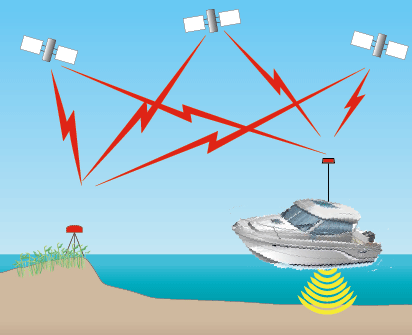Description
|
Land development and alterations of the ecosystem in south Florida over the past 100 years have decreased freshwater and increased nutrient flows into many of Florida's estuaries, bays, and coastal regions. As a result, there has been a decrease in the water quality in many of these critical habitats, often prompting seagrass die-offs and reduced fish and aquatic life populations. Restoration of water quality in many of these habitats will depend partly upon using numerical-circulation and sediment-transport models to establish water-quality targets and to assess progress toward reaching restoration targets. Application of these models is often complicated because of complex sea floor topography and tidal flow regimes. Consequently, accurate and modern sea-floor or bathymetry maps are critical for numerical modeling research. Modern bathymetry data sets will also permit a comparison to historical data in order to help assess sea-floor changes within these critical habitats. New and detailed data sets also support marine biology studies to help understand migratory and feeding habitats of marine life. This data series is a compilation of 13 mapping projects conducted in south Florida between 1995 and 2015 and archives more than 45 million bathymetric soundings (fig. 1). Data were collected primarily with a single beam sound navigation and ranging (sonar) system called SANDS (Hansen and DeWitt, 2000) developed by the U.S. Geological Survey (USGS) in 1993. Bathymetry data for the Estero Bay project were supplemented with the National Aeronautics and Space Administration's (NASA) Experimental Advanced Airborne Research Lidar (EAARL) system. Data from eight rivers in southwest Florida were collected with an interferometric swath bathymetry system. The projects represented in this data series were funded by the USGS Coastal and Marine Geology Program (CMGP), the USGS South Florida Ecosystem Restoration Project- formally named Placed Based Studies, and other non-Federal agencies. The purpose of the data collection for all these projects was to support one or more of the following scientific aspects: numerical model applications, sea floor change analysis, or marine habitat investigations. This report serves as an archive of processed bathymetry sounding data, digital bathymetric contours, digital bathymetric maps, sea floor surface grids, and formal Federal Geographic Data Committee (FGDC) metadata. Refer to the Abbreviations page for explanations of acronyms and abbreviations used in this report. Since 2006, the USGS St. Petersburg Coastal and Marine Science Center (SPCMSC) assigns a unique identifier or Field Activity Number (FAN) for each field data collection. Projects described in this report conducted prior to 2006 do not have a FAN. Data from the 13 projects presented in this report provided critical hydrographic information to support multiple science projects in south Florida. The projects and the types of sounding data collected are:
Information StatementThis report was prepared by an agency of the United States Government. Although these data have been processed successfully on a computer system at the U.S. Geological Survey (USGS), no warranty expressed or implied is made regarding the display or utility of the data on any other system, nor shall the act of distribution imply any such warranty. The USGS shall not be held liable for improper or incorrect use of the data described and (or) contained herein. Reference herein to any specific commercial product, process, or service by trade name, trademark, manufacturer, or otherwise does not constitute or imply its endorsement, recommendation, or favoring by the United States Government or any agency thereof. Suggested Citation, B.J., 2017, Archive of bathymetry data collected in South Florida from 1995 to 2015: U.S. Geological Survey Data Series 1031, https://doi.org/10.3133/ds1031. |











